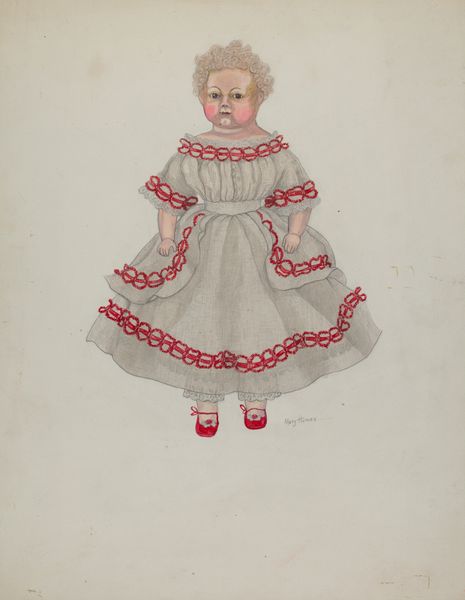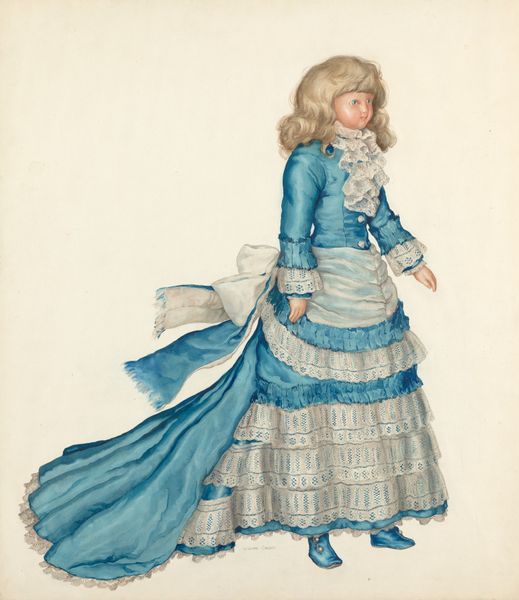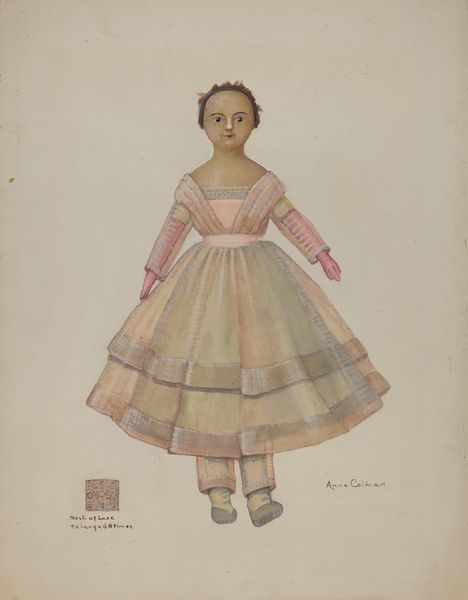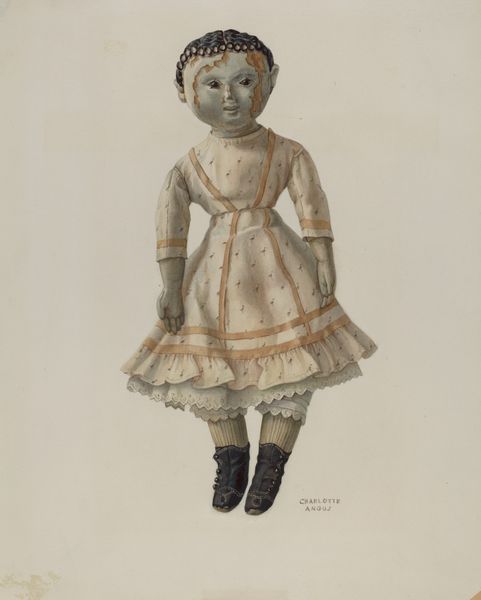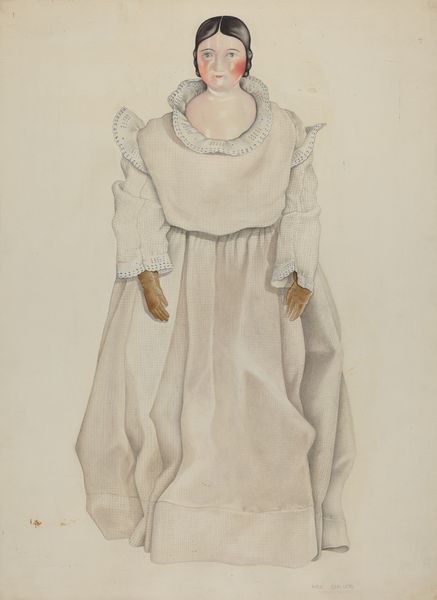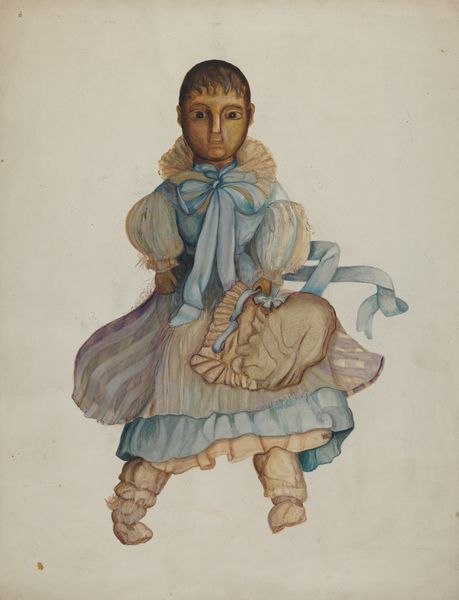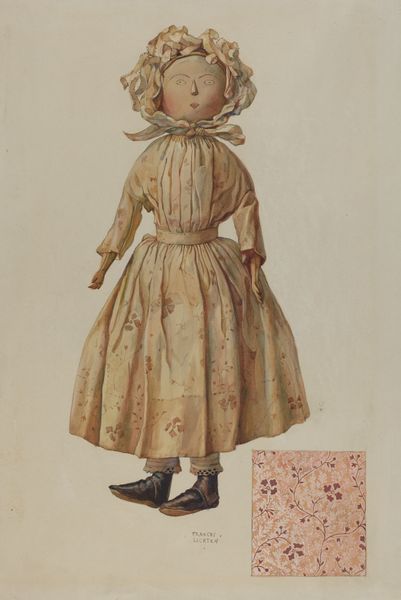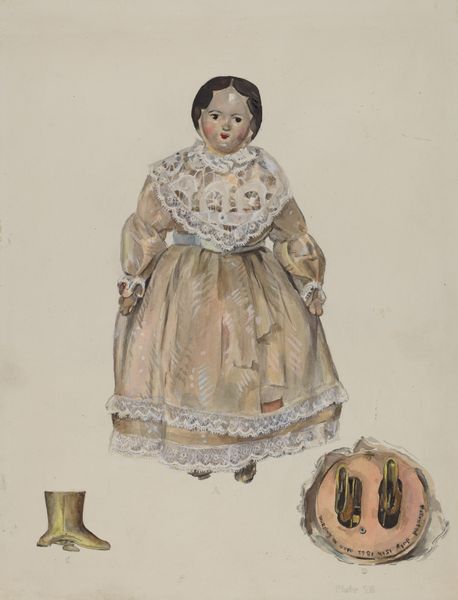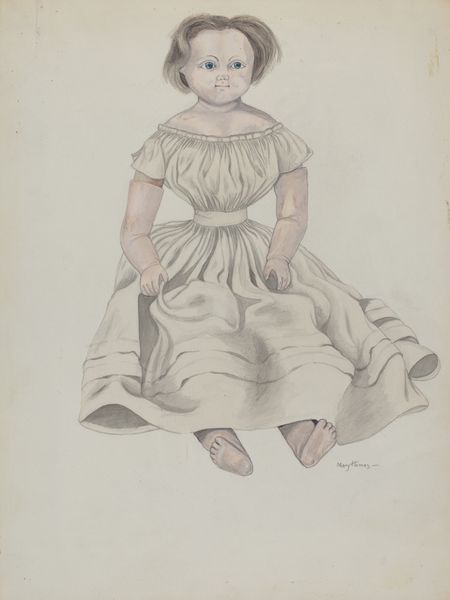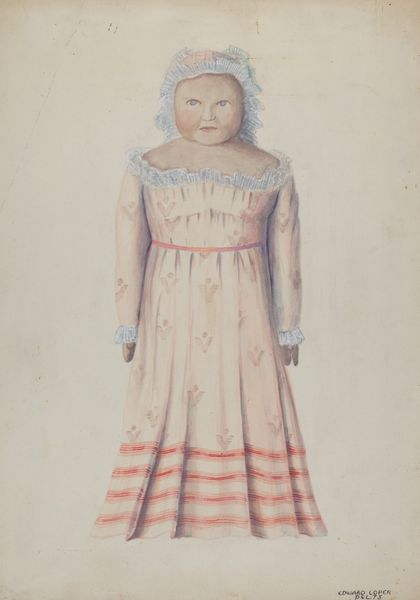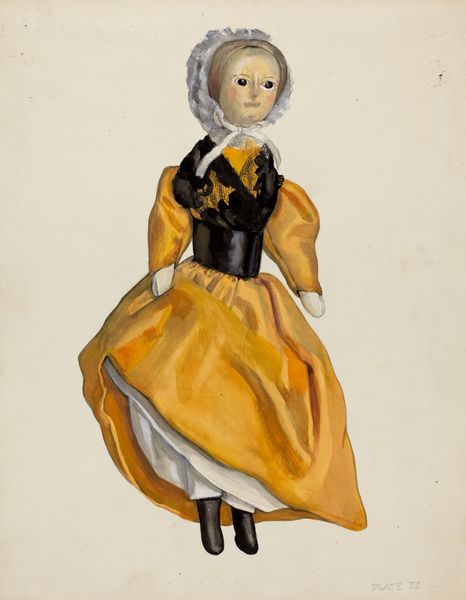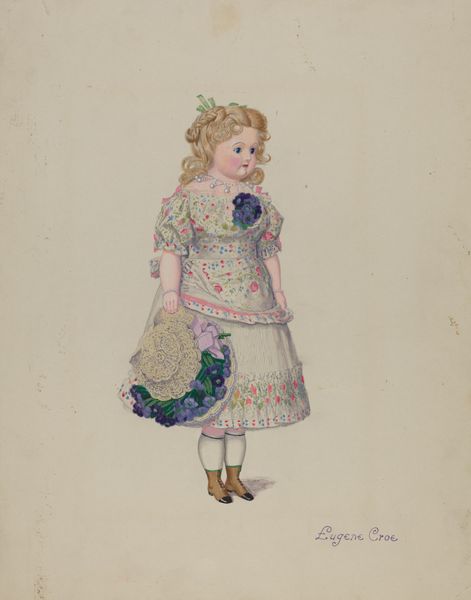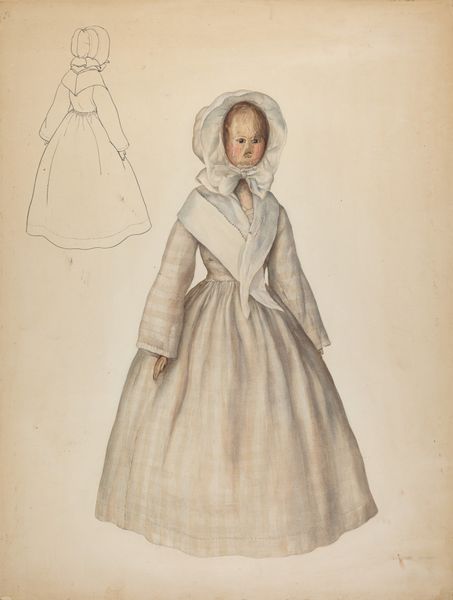
drawing, watercolor
#
portrait
#
drawing
#
figuration
#
watercolor
#
historical fashion
#
coloured pencil
#
portrait drawing
#
watercolor
Dimensions: overall: 50.7 x 38.2 cm (19 15/16 x 15 1/16 in.) Original IAD Object: 24" high
Copyright: National Gallery of Art: CC0 1.0
Editor: Here we have Dorothy Brennan’s “Wax Headed Doll,” created around 1937. It’s a watercolor and colored pencil drawing. The doll’s direct stare and somewhat stiff pose create a strangely unsettling feeling. What do you see in this piece? Curator: That unsettling feeling is potent. Brennan's choice of subject – a doll, typically associated with childhood innocence – immediately invites us to question those very notions. Given that this work was created in the late 1930s, a period marked by economic hardship and the looming shadow of war, I think this portrait engages with anxieties of the time. Dolls often become surrogates. How does this particular doll reflect gendered expectations? Editor: I hadn’t thought about it that way. The doll’s dress and its presentation, the emphasis on appearance – does that reinforce traditional ideas about femininity? Curator: Precisely. And consider the material of the doll – wax. It's easily molded, yet fragile. Is Brennan suggesting something about the societal pressures on women, who were often expected to be malleable and compliant, yet remained vulnerable? Also, I'm curious about your thoughts regarding dolls and consumerism at that period. Editor: Interesting, because dolls were commercial objects too. So the painting makes you wonder whether Brennan critiqued consumer culture's role in shaping these identities, especially gender roles. Curator: Precisely. Brennan seems to be speaking about identity as a constructed performance, both personally and socially. So the wax head takes on an added level of critique, like these rigid and harmful performances risk damaging oneself. What did you learn? Editor: Seeing how this piece speaks to its specific social and political moment really helps me understand how art can reflect the complexities of identity and power. Curator: Absolutely. Examining those threads helps us unravel the work’s meaning, and see how art invites a powerful, intersectional discourse between art and society.
Comments
No comments
Be the first to comment and join the conversation on the ultimate creative platform.
